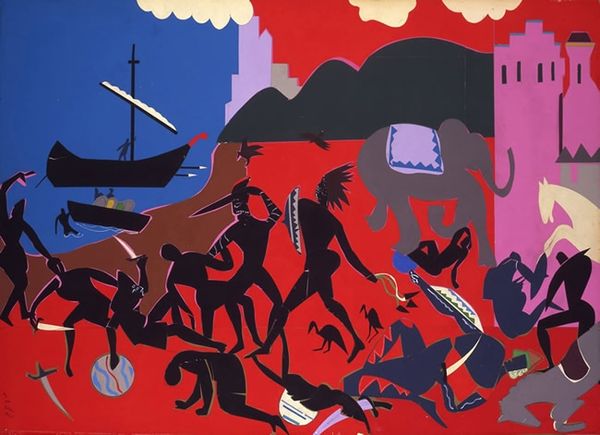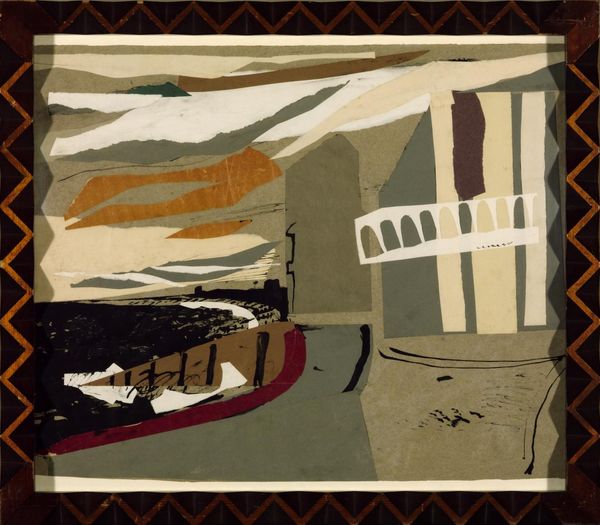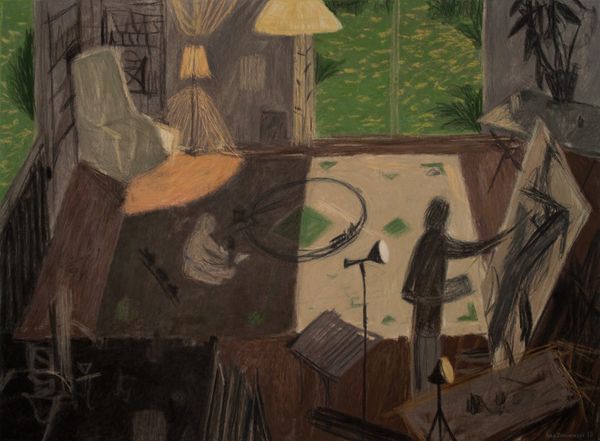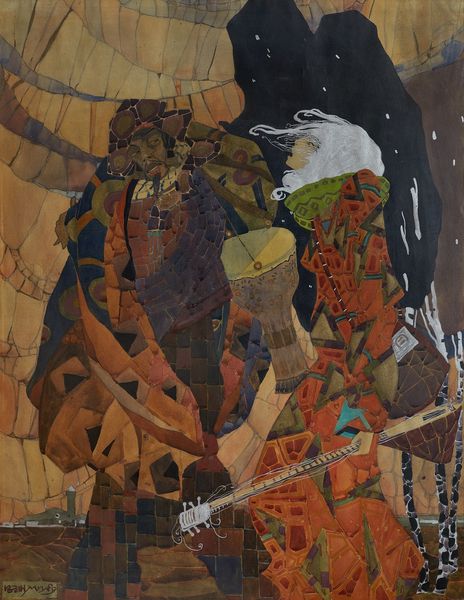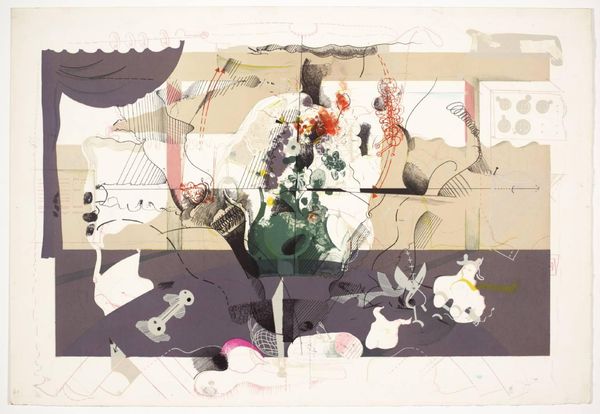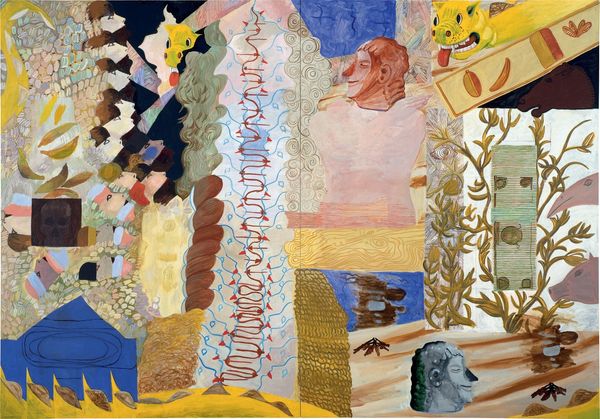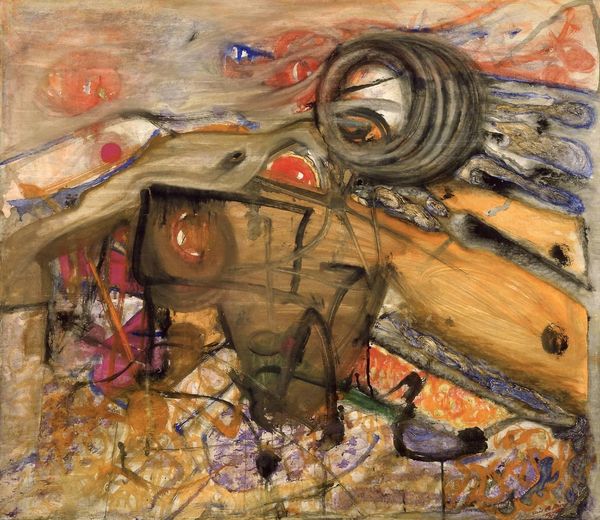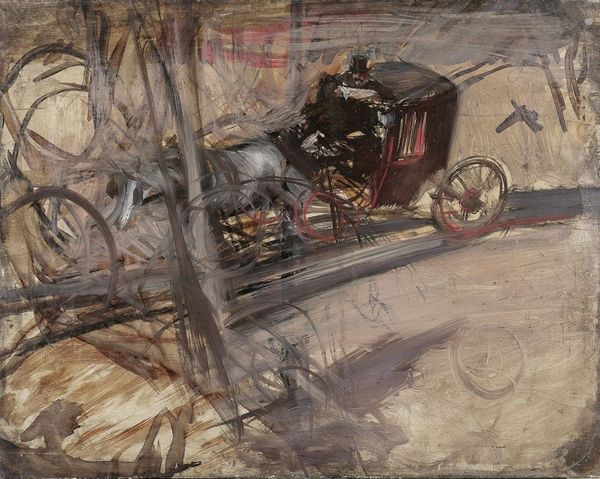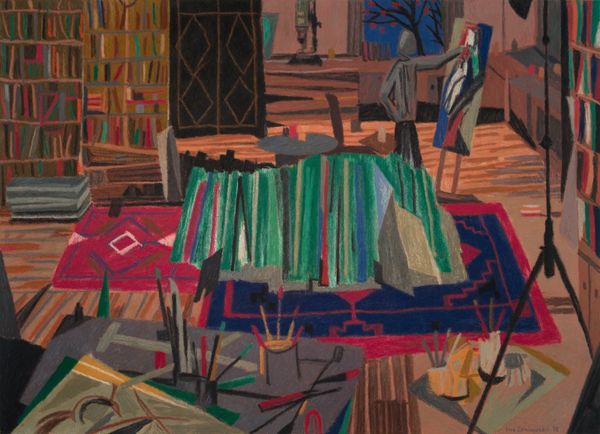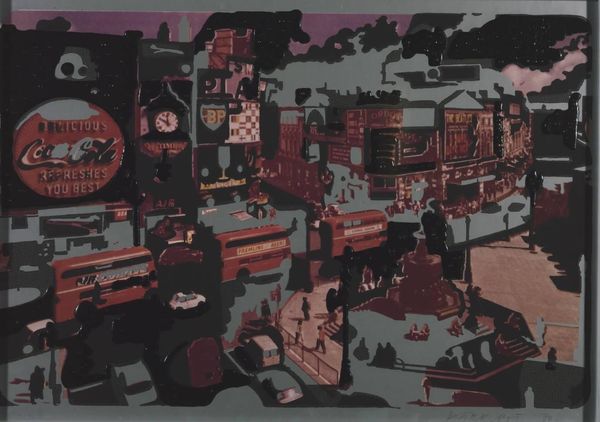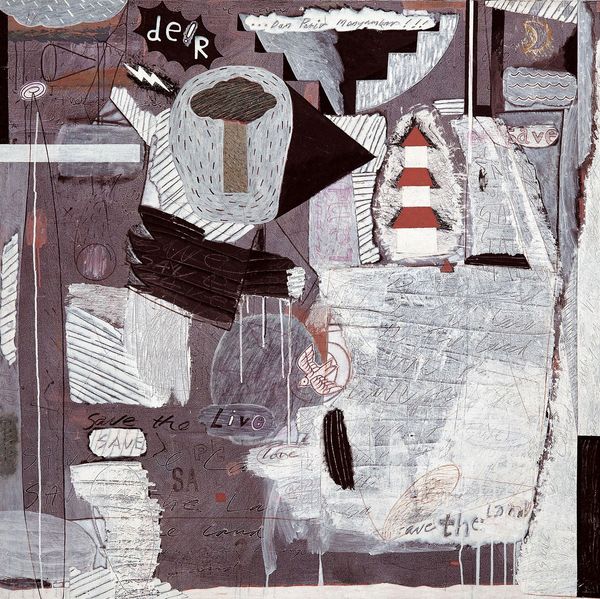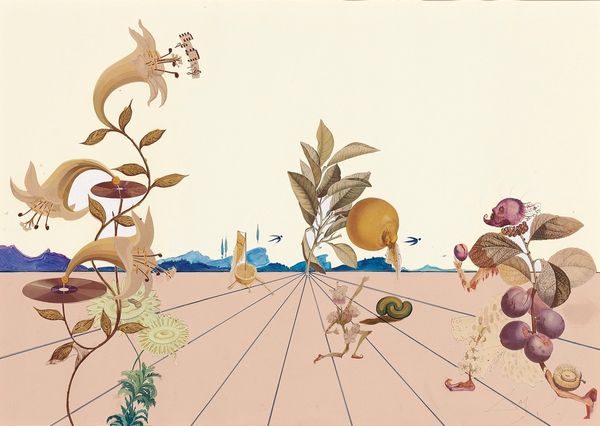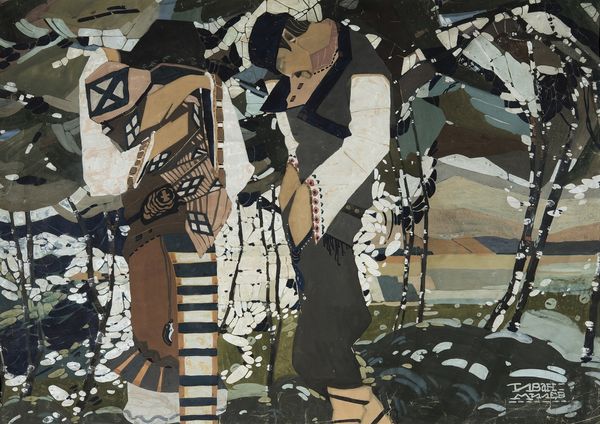
Copyright: Public domain
Curator: Ivan Milev created this oil painting titled "Despair" in 1923. What's grabbing your attention first? Editor: The flattened perspective is really striking. It’s like a stage set, figures arranged with an almost theatrical intensity, heightened by the earthy color palette. Curator: Milev's process involved building up layers of oil paint to achieve this unique tapestry-like texture. It almost denies depth while simultaneously evoking the weight of its historical influences and material reality. The figures are compressed into this shallow space. Editor: Absolutely, but what's particularly interesting is how this flatness emphasizes the shapes and lines. Note how Milev uses patterns in the clothing to direct our eye, almost in defiance of realistic representation. There is almost a Byzantine feeling within the color and lines of the composition. Curator: I agree, that's central. Consider also, the political context in the post-war Balkans. There are references to orientalism with how labor, landscape, and social disruption create this emotional tone. Editor: The color usage further creates a mood, from muted browns and greys. See how those muted hues create a sense of oppression. It seems there is some relationship with its symbolist influences. Curator: Yes, there’s an inherent relationship in this painting between despair and material scarcity, which leads me to look at the production of folk art in the area during that era. I understand it was informed by folk art production techniques and by community knowledge to make artistic objects. Editor: It's true that these visual details underscore its broader cultural relevance. What stays with me, though, is the formal arrangement: those compressed planes create this atmosphere where figures appear trapped. A powerful depiction that uses its visual elements to elicit feelings. Curator: Milev's work encourages reflection about the relationship of production and making to a population, as it highlights tensions during its historical and cultural context. Editor: I’ll think of that on my way to the next artwork! This close look brought out details I wouldn’t have spotted at first, it truly makes a strong emotional impression!
Comments
No comments
Be the first to comment and join the conversation on the ultimate creative platform.

